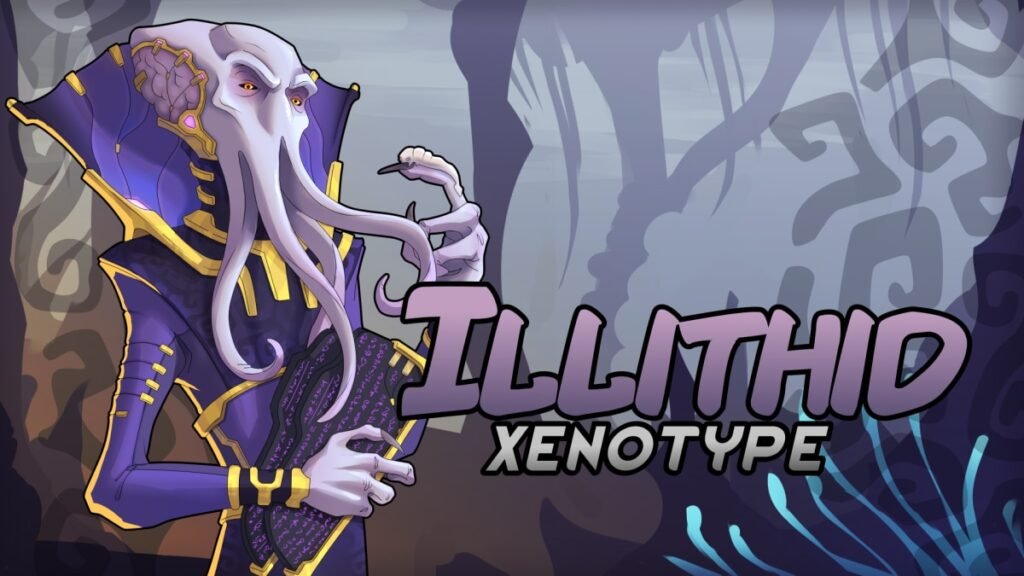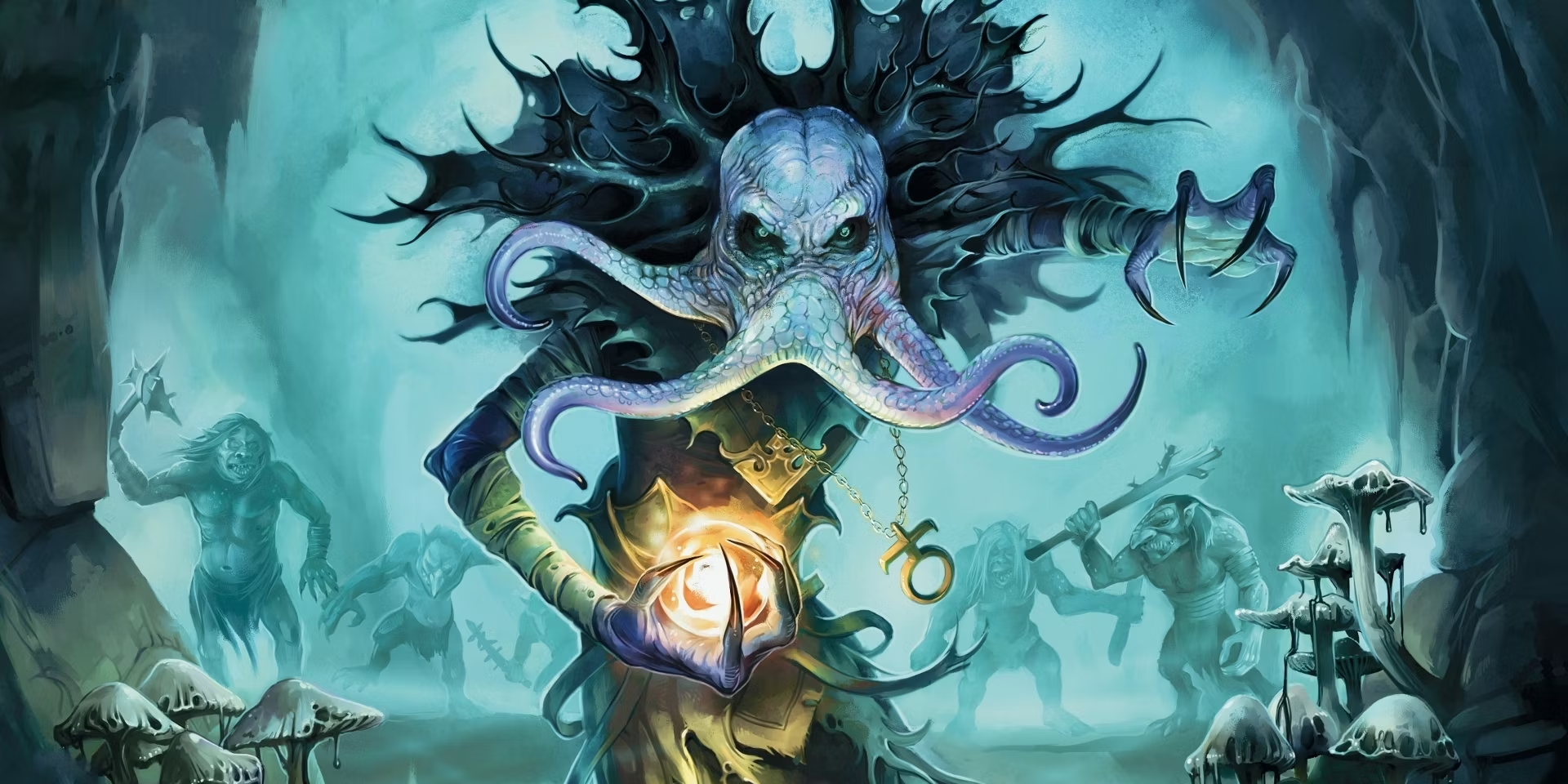In the dark corners of fantasy lore, there exist creatures so alien and terrifying that they inspire dread in even the bravest adventurers. Among these are the illithids, or mind flayers, an ancient and enigmatic species known for their psychic abilities, hunger for brains, and desire to dominate all other forms of life. These iconic beings have become a central fixture in fantasy role-playing games, particularly in Dungeons & Dragons (D&D), where they are often depicted as formidable antagonists with nearly unmatched mental prowess. But what exactly makes illithids so unique and feared?
Origins of the Illithid
The origins of the illithids are shrouded in mystery, as much in their fictional lore as in their creative development within fantasy literature and games. In D&D, they are said to come from a far-distant future or another plane of existence, where they ruled a vast, galaxy-spanning empire. Their civilization, however, fell into ruin, leading to their descent into smaller, hidden enclaves scattered across the multiverse. Some speculate that the illithids’ fall was the result of a rebellion by their former thralls, the gith, a humanoid species that eventually broke free of the illithids’ control and became sworn enemies.
In the D&D mythos, illithids were first introduced in 1975, in the game’s original edition, where they were described as mind-controlling horrors lurking in the darkest depths of dungeons. Since then, they’ve been fleshed out into a complex race with intricate social hierarchies, motivations, and relationships with other species. Beyond D&D, illithid-like creatures can be found in other fantasy settings, as their combination of psychic powers and alien appearance make them compelling villains.
Appearance and Physiology
Illithids are instantly recognizable by their distinctive, unsettling appearance. Humanoid in shape, they stand about six feet tall but possess none of the warmth or familiarity of human beings. Their skin is smooth, rubbery, and usually a pale purplish color, giving them an otherworldly, amphibious look. What truly sets them apart, however, is their heads, which resemble octopuses or squids. Their faces are dominated by a cluster of writhing tentacles that hang down from where a mouth would be on most humanoids. Behind these tentacles lies their true horror: a beak-like mouth designed to pierce the skulls of their victims so they can consume their brains.
This consumption of brains is not merely an act of sustenance but also serves a greater purpose for illithids. When they consume a brain, they absorb the knowledge and memories of the victim, augmenting their own intelligence and experience. This makes each illithid incredibly dangerous, as they can rapidly accumulate knowledge from multiple sources, making them expert tacticians, spellcasters, and manipulators.

Psychic Powers and Mind Control
Illithids are best known for their formidable psychic abilities. Unlike other magical creatures, they don’t rely on spells or potions to manipulate the world around them; instead, they wield psionics, an innate mental power that allows them to control minds, crush the will of their enemies, and even warp reality. With the power of their minds alone, illithids can communicate telepathically, dominate lesser beings, and project devastating psychic blasts that can incapacitate or kill in an instant.
One of the most feared abilities of the illithids is their power of mind control. Illithids can enslave others by breaking their minds, turning once-loyal allies against their comrades or forcing innocents to do their bidding. This psychic domination is one of their most potent tools for maintaining control over their thralls, a key component of their social structure.
The Elder Brain and Illithid Society
Illithids live in tightly-knit communities known as “colonies,” which are typically hidden deep underground or in other secluded places far from the prying eyes of surface dwellers. Each colony is ruled by a central entity known as the Elder Brain. This massive, grotesque brain resides in a pool of briny fluid and serves as the hive mind for the entire colony. All illithids are connected to the Elder Brain via telepathy, and it acts as the supreme authority, directing the colony’s activities, strategy, and even individual thought processes to some extent.
The Elder Brain is not just a leader but also the repository of all the knowledge and memories accumulated by the illithids in its colony. When an illithid dies, its brain is removed and added to the Elder Brain, thus contributing its knowledge and experiences to the collective consciousness. In this way, the Elder Brain represents the accumulated intelligence of generations of illithids, making it an entity of immense wisdom and power.

The Process of Ceremorphosis
One of the most disturbing aspects of illithid culture is their reproduction, a process known as ceremorphosis. Illithids do not reproduce in the traditional sense; instead, they create more of their kind through a parasitic transformation process. They produce tiny, tadpole-like creatures that are implanted into the skulls of humanoid victims. Over time, these tadpoles consume the victim’s brain, gradually transforming the host into a new illithid. This process erases the host’s personality, memories, and soul, leaving behind only a vessel for the illithid mind.
Ceremorphosis is one of the reasons why illithids are feared across the multiverse. Not only do they represent a physical threat, but they also symbolize the loss of identity and autonomy, as their victims are transformed into mindless puppets for their hive mind. It’s a fate so terrifying that even hardened adventurers may think twice before crossing paths with a colony of illithids.
Conflict with Other Species
Throughout their existence, illithids have been in constant conflict with other species, both for survival and dominance. Their most bitter enemies are the gith, a race of humanoid beings who were once enslaved by the illithids but eventually rebelled and won their freedom. The gith are divided into two factions: the githyanki, who are militant and aggressive, and the githzerai, who focus on personal enlightenment and psychic mastery. Both groups continue to wage war against the illithids in an attempt to eradicate their former masters from the multiverse.
Illithids also find themselves at odds with surface-dwelling races such as humans, dwarves, and elves, who view their mind-controlling ways and brain-eating tendencies with justified suspicion. Yet illithids rarely engage in direct warfare; they prefer to operate in the shadows, manipulating events from behind the scenes and using their psychic abilities to sow discord among their enemies.
Conclusion
The illithids, with their terrifying appearance, psychic powers, and parasitic reproduction, are one of the most iconic and feared creatures in the fantasy genre. Whether ruling over hidden colonies or manipulating events from the shadows, they represent the ultimate alien intelligence—cold, calculating, and utterly devoid of empathy. Their desire for domination and their ability to control the minds of others make them formidable adversaries, ensuring that any encounter with an illithid is fraught with danger and intrigue.





